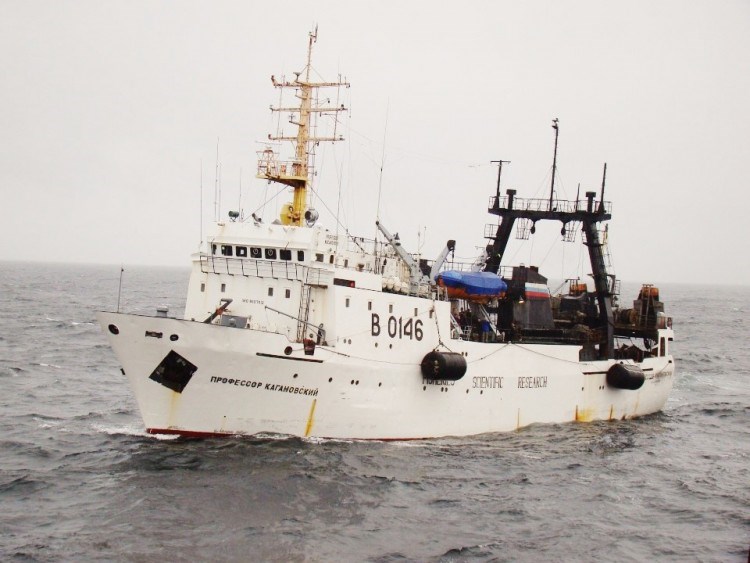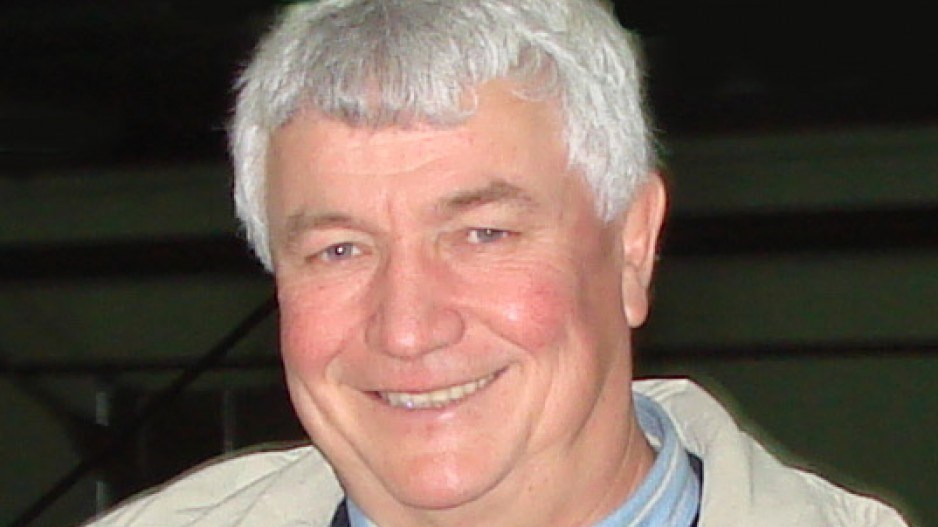Every year, billions of salmon enter the Pacific Ocean.
Most of them never come back, so estimating returns in a given year is a bit of a crap shoot.
“We know a lot about Pacific salmon, but what we need to know most, we mostly don’t know,” says Dick Beamish, a retired fisheries scientist who is determined to understand what happens to salmon after they go to sea.
The renowned Fisheries and Oceans Canada scientist emeritus has assembled an international team of 17 scientists as part of an expedition to study salmon in the Gulf of the Alaska this winter.
“The scientists are all volunteers and they’re all first-rate researchers from around the Pacific, and all the data we collect will be made public,” Beamish said.
“This has never been done before. We’ve had surveys. Other countries have surveyed the Gulf of Alaska – bits of it – but never in a comprehensive survey. I think we will make discoveries that will change how we do Pacific salmon research.”
Beamish, an Order of Canada recipient, has been quietly raising money for the $1.1 million expedition, dubbed the Signature Program.
With the help of the Pacific Salmon Foundation and North Pacific Anadromous Fish Commission (NPAFC), he has already raised enough to charter a Russian research vessel, although he still has a few more dollars to go before the expedition is an official go.

At 76, Beamish said he won’t be on the vessel himself.
“This is in the winter in the Gulf of Alaska on a Russian ship, so it’s not the most pleasant thing to do,” he said.
The vessel and 17 scientists from Canada, Russia, the U.S., South Korea and Japan will spend close to a month at sea in the Gulf of Alaska.
Although the project has been described as a joint Canadian-Russian effort, it's not a government sponsored project. DFO is contributing to the survey, but it is an independent, international project that is being funded largely by non-government donors and organizations, like the Pacific Salmon Foundation.
The scientists will study food availability and density, ocean temperature and salinity. They will also be catching salmon using trawl nets and doing an array of studies, testing for disease, and assessing diet, size, health and genetic signatures to determine which country the fish come from.
Although some ocean surveys have been done in the past by countries like Russia and Japan, a comprehensive survey of the Gulf of Alaska, where most sockeye, pink and chum spend the winter, has never been done in the winter on such a large scale using trawl nets.
“This the first time that we’re applying a large trawl in the North Pacific so we can look at the distribution and density of salmon in the various levels of the North Pacific,” said Brian Riddell, CEO of the Pacific Salmon Foundation.
Ocean surveys like Signature Program can help fisheries scientists make better predictions for salmon returns.
“This is the first of what we hope will be several cruises,” Riddell said. “If this is done over a number of years, this could become a really important indicator of what we might expect to see back in a year or two.”
Much of what is known about salmon comes from studying them in coastal waters and in the lakes and rivers where they are born and die. There is a lack of information on what happens to them at sea, where they spend half of their lives.
“A lot of effort has gone into studying the salmon species in the coastal zones of all the countries over the past 20 to 25 years,” Riddell said. “Out in the open water of the Pacific, that has been significantly curtailed.”
When an unusually warm region of water, called the blob, showed up in the north Pacific between 2013 and 2016, it was presumed to have had an impact on the food web and, ultimately, on fish.
That event has underscored the need to better understand ocean conditions where most salmon species spend the bulk of their adult lives.
“It’s time that we have to go and really look at what’s going on in the open Pacific,” Riddell said.
Over the decades, some salmon stocks have plummeted while others thrived. Coho, for example, reached critical low levels in the 1990s, and now appear to be recovering, and Fraser River sockeye hit near record lows in 2009, only to spike to a record high in 2010.
A study this year showed that Pacific salmon, overall, are more abundant than they have ever been. But that abundance is heavily skewed by pink salmon, while larger, slow-growing chinook have been in decline.
Beamish has a theory that chinook productivity is largely determined by how fast they can grow in the first two months in the ocean. He is hoping the Signature Program will help test that theory.
“We will look at the overall fitness and condition,” Beamish said. “We will test this idea that all of the factors that affect salmon abundance will mostly have had their impact after the first ocean winter.
“I believe, along with colleagues, that we will make important discoveries that will begin to give the information that provides a basic understanding of mechanisms that regulate salmon.”
Once the March 2019 survey is done, all of the data collected will be made available to other scientists. And it is hoped that even larger, more routine ocean surveys will follow the Signature Program.




